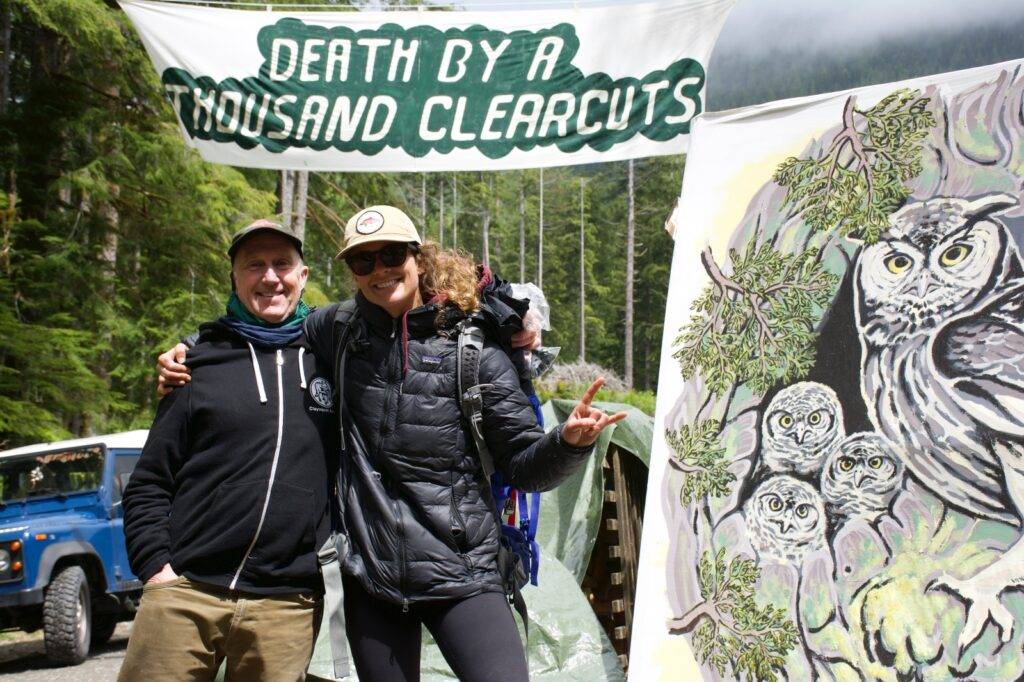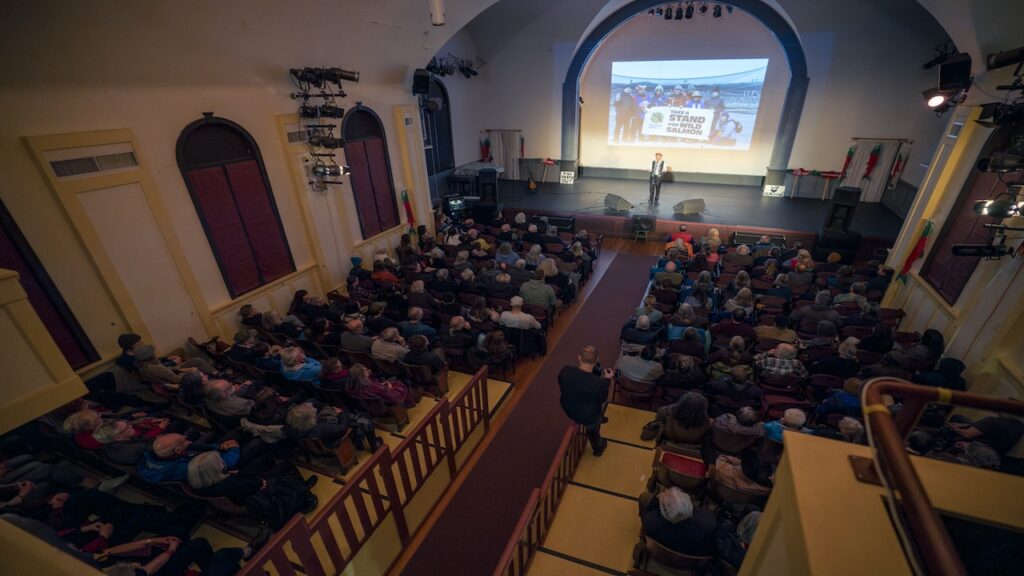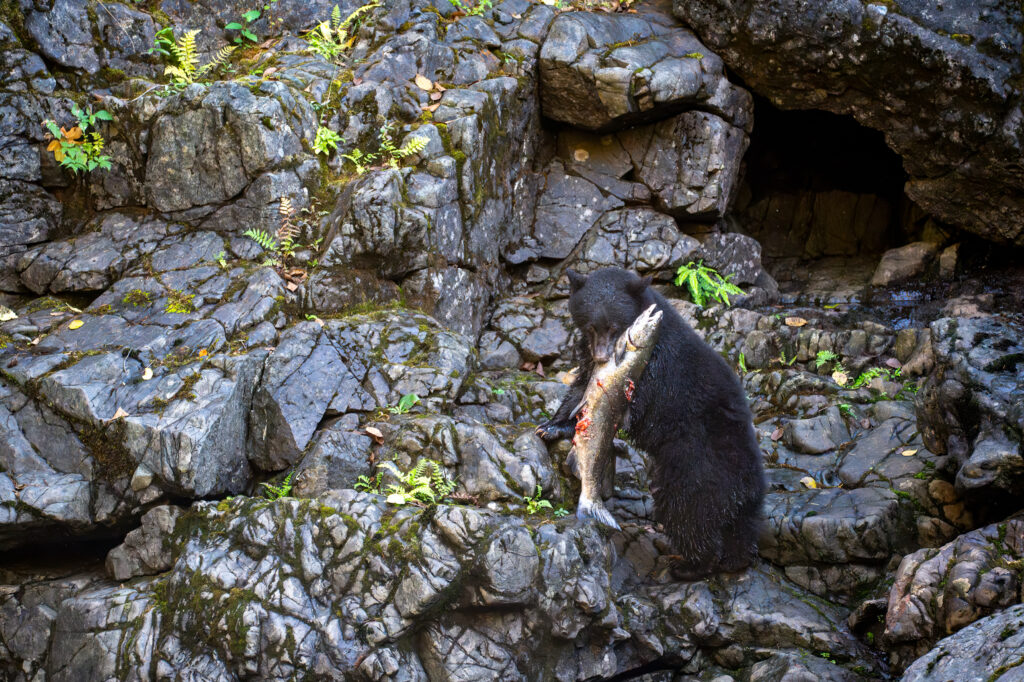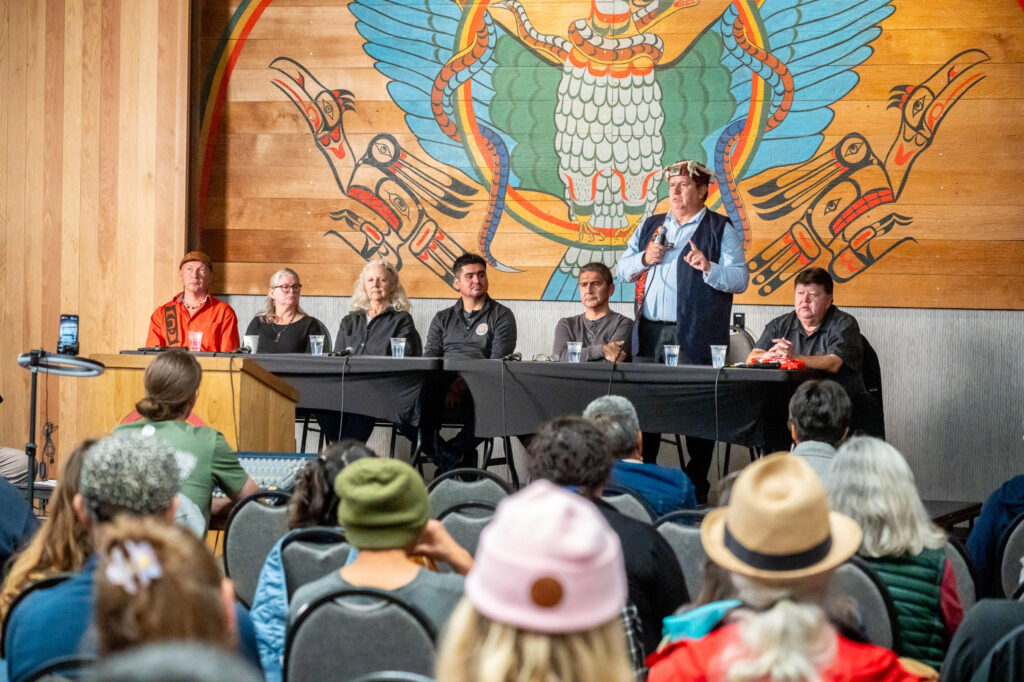I couldn’t help but notice British Columbia’s slumbering forest movement awakening over the last few years. Busy working hard to protect the wild salmon which ancestral forests depend on, I watched from the fringes. This spring when our volunteers and staff (and half of Tofino) headed down to Fairy Creek, we knew it was time to step up.
The BC government was elected in 2017 with promises to protect the environment, and again in 2020 on a promise to protect old-growth forests. Old-growth forests are defined as older than 250 years. This definition hides the kind of trees that create conflict. The biggest and rarest trees—ancient cedars living one to two thousand years and reaching heights of up to two hundred feet—are also worth the most money. Now only 2.7% of BC’s ancient forests remain, but lumber prices are through the roof.
After several years of public consultations, the pair of foresters tasked with finding a solution released their final report in April 2020. It calls for a ‘paradigm shift’ in the way forestry is practised in BC. Incidentally, this is the same shift proposed for Clayoquot Sound 25 years ago. It basically calls for flipping forestry on its head—rather than log the best timber and let Nature including humans share the scraps, you start by deciding what you want to be left with after logging—clean water, biodiversity, economic opportunities for First Nations, recreation opportunities, etc. Then you only log what is ‘leftover’ from those vital needs.

Enter the Rainforest Flying Squad
Last August, at the height of uncertainty around the global pandemic—no end in sight, a vaccine a distant dream—a group of stalwarts from the south Island (the Rainforest Flying Squad) set up a camp to protect Fairy Creek (known as Ada’itsx by the Pacheedaht First Nation).
Fairy Creek somehow flew under the radar all these years. A small but fully intact watershed, just a few miles upstream from the logging town of Port Renfrew, it pops out on satellite photos. When you slip into the forest on the ground, you find a land of wonder, much like the BC coast used to be—everywhere.
Drive from Victoria to Tofino, and you will pass two small groves of forest like this—Goldstream Park and Cathedral Grove. While government and industry like to claim there is plenty of old-growth left, what remains is mostly scraps left behind on ridges and hilltops—too steep or too scrubby to be logged profitably. Ace is low in forestry—the big trees tend to grow down in the valley bottoms, nourished annually by wild salmon returning to spawn and die.
Everything we said 30 years ago during BC’s War in the Woods was true. Now the facts are that much more compelling. This is truly the last opportunity to protect BC’s ancestral forests—as jurisdictions like New Zealand did long ago.
Some things have changed. For example Indigenous Rights and Title, and the climate crisis, were nowhere near as prominent in public discourse. Those challenges too have only become more urgent…
When I emailed a friend and supporter about heading to Fairy Creek, the subject of her reply was “NOOOOOOOO…………the salmon need you!!!”. Although it is true that Clayoquot Action is working flat-out to prevent the extinction of wild salmon on which the forests and wildlife depend, we knew as veteran organisers of the 1990s War in the Woods, it would be important to show up for Fairy Creek. So we packed our camping gear and headed south.
Follow the rainbow to Fairy Creek
Driving west on Highway 18 towards Lake Cowichan in light drizzle. A rainbow arcs over the verdant broadleaf maples lining the roadway—a sign? The next morning we convoyed the one hour drive to Headquarters Camp, following three other vehicles full of CA staffer Keegan, volunteer Sierra, and their families. Six more cars trail behind us—strength in numbers! With all the talk of police exclusion zones and erratic and arbitrary enforcement activities, we really didn’t know what we were heading into. Expect the unexpected…
The green winding road to Port Renfrew is a lovely drive, paved and smooth. When we turned off the road into HQ, we were greeted at the gate and directed into a large gravel pit to camp. Immediately we began running into friends from Tofino, and old comrades from the battles of the 90s. Their kids had made so many beautiful signs to bring their messages. What sort of future are we leaving them?

It was like a homecoming or reunion. Although the old-timers among us did question why we were having word-for-word the same conversations we had thirty years ago! It was déjà vu all over again.
Three to four hundred people gathered for the circle at noon. Pacheedaht elder Bill Jones welcomed us to the territory of his Nation, and recognised everyone there as Quuʔas: real human beings. Indigenous guests from Squamish Nation followed their protocol, making speeches and presenting gifts to the Pacheedaht.
We then carpooled a few miles towards Port Renfrew, parking at Braden Gate to begin the eleven kilometre hike up to Waterfall Camp. It was a solemn funeral march to honour all the creatures who died when the forests were logged, and to honour the bones of the ancestors in these forests.
Bonny & I are kayakers, not hikers. The logging road was steep, but we were buoyed to be in a crowd of people five hundred strong. And so many encounters with old friends—people like artist Mark Hobson and writer Briony Penn—who have had major impact on BC environmental battles over so many years. Lots of people were with their kids, many of whom are now young adults committed to carrying on the work begun by their parents so long ago. People who were my elders back in the day are still showing up at Fairy Creek/Ada’itsx. This movement is multi-generational: one river, flowing through time and creating a living and shared history.
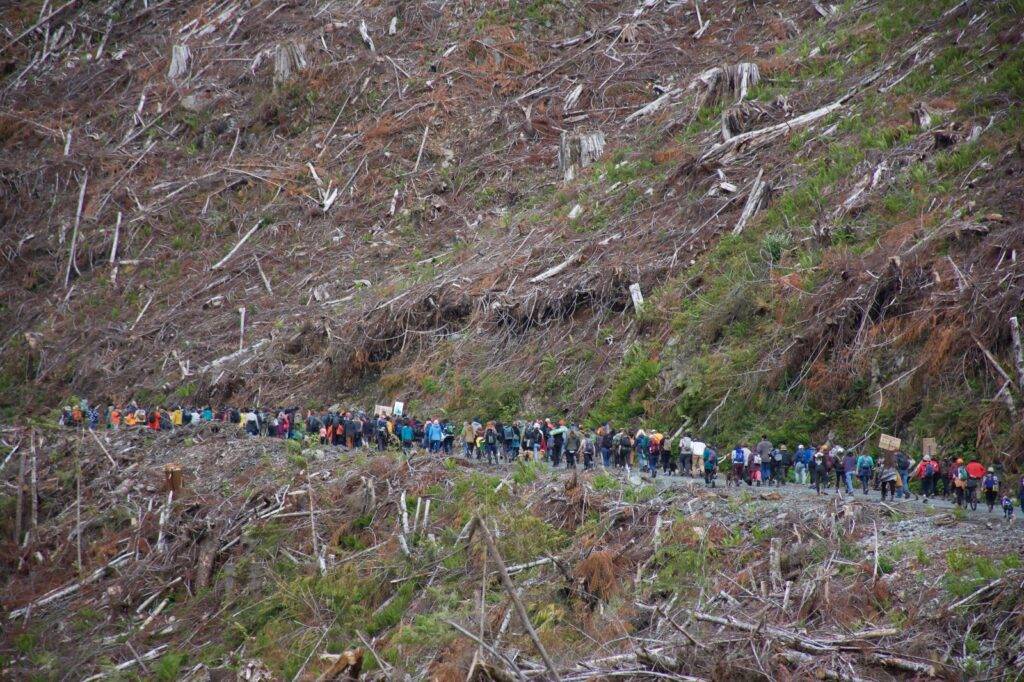
Waterfall Camp had been taken down by police a day earlier. That was not obvious when we arrived. The camp was back in full swing, with various devices ready should the RCMP return. The arrests have been un-necessarily violent, making the presence of observers all the more critical to ensure the safety of those risking arrest. It’s not like Clayoquot Summer, when the police did not take sides in the conflict. They were simply there to ensure public safety and arrest anyone violating the injunction. Today’s heavily militarized RCMP seem to think they are one of the sides in the new War in the Woods. Meanwhile the forest protectors are defiantly nonviolent. The police action is costing millions of dollars, and frequently putting peaceful citizens at risk. Their actions will only strengthen calls to defund the police.
Worth more standing
The situation at Fairy Creek/Ada’itsx is ongoing and evolving rapidly. This story is simply a snapshot; my impressions of a short visit on the weekend.
Days after our visit, the Pacheedaht, Ditidaht and Huu-ay-aht First Nations requested a two-year pause on old-growth logging in two valleys, which the BC government agreed to a day later. Although some areas have been deferred for two years, elder Bill Jones and the Rainforest Flying Squad are asking people to keep coming to camp until all old-growth in the region is protected.
This is much bigger than Fairy Creek. Within days the Squamish Nation called for an end to all logging of their ancestral forests. And a gate has been erected by members of Wilp Git’luuhl’um’hetxwit, a house group of the Gitxsan Nation. The government has tried to remove that gate, rather than supporting that group in protecting their lands from colonial resource extraction.
The BC government is cynically making it sound like anyone trying to protect old-growth is now a colonialist. World turned upside down… Green Party MLA Adam Olsen (a member of the Tsartlip First Nation) addressed this, pointing out that Premier Horgan’s government is dragging our colonial past into the present and further entrenching it in the future.
This story will continue to unfold over the coming months and years. It is truly down to the wire, and time to take a stand for the forests. Clayoquot Action will continue to support this movement, and I’d like to encourage you, dear reader, to consider what action you can take. If you can, I would encourage you to head down to Fairy Creek/Ada’itsx with your friends and family, to see for yourself what an organised, and fierce but peaceful resistance on the ground looks like.
It is a wonderful part of Vancouver Island, and you will be standing on the right side of history. I’m confident this battle will be won, because the truth is on the side of the protectors. They are not about to go home until they are satisfied the ancient forests which define this coast are fully protected. Stand with them!
Dan Lewis is Executive Director of Clayoquot Action.
